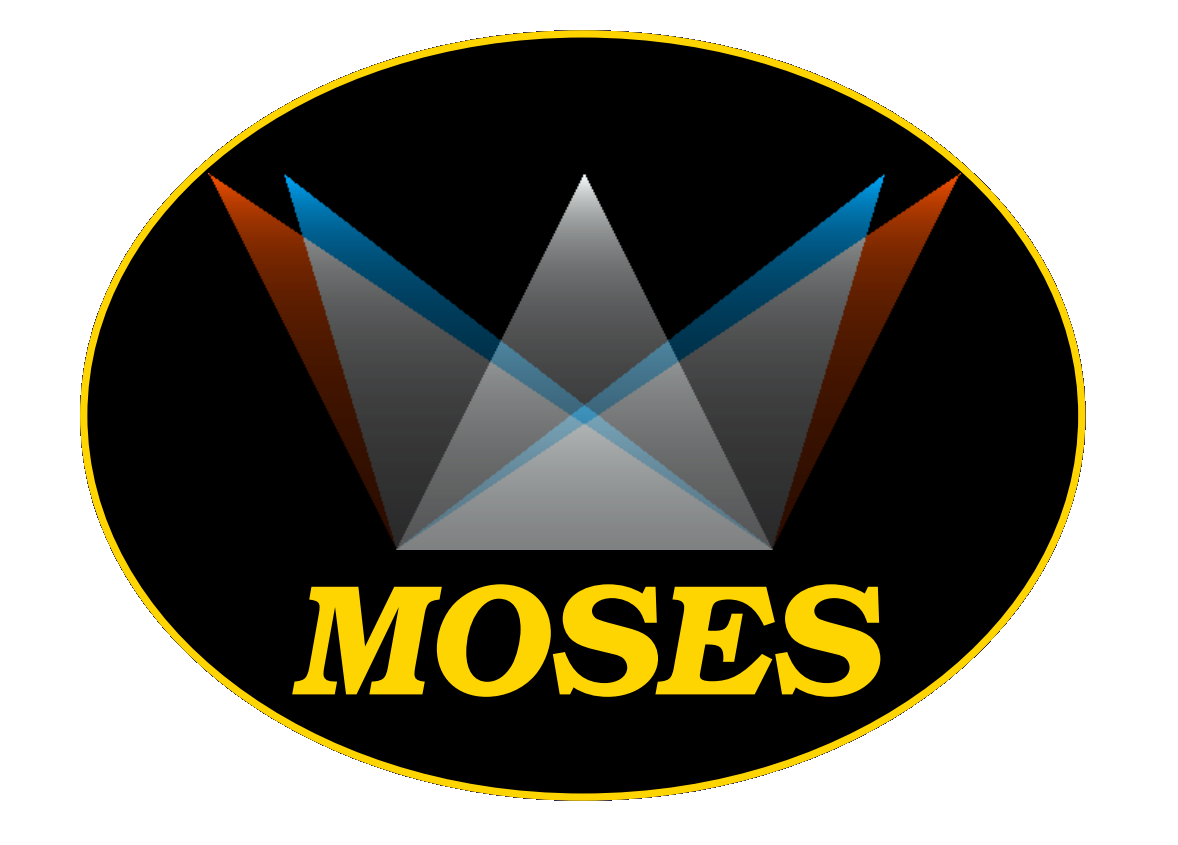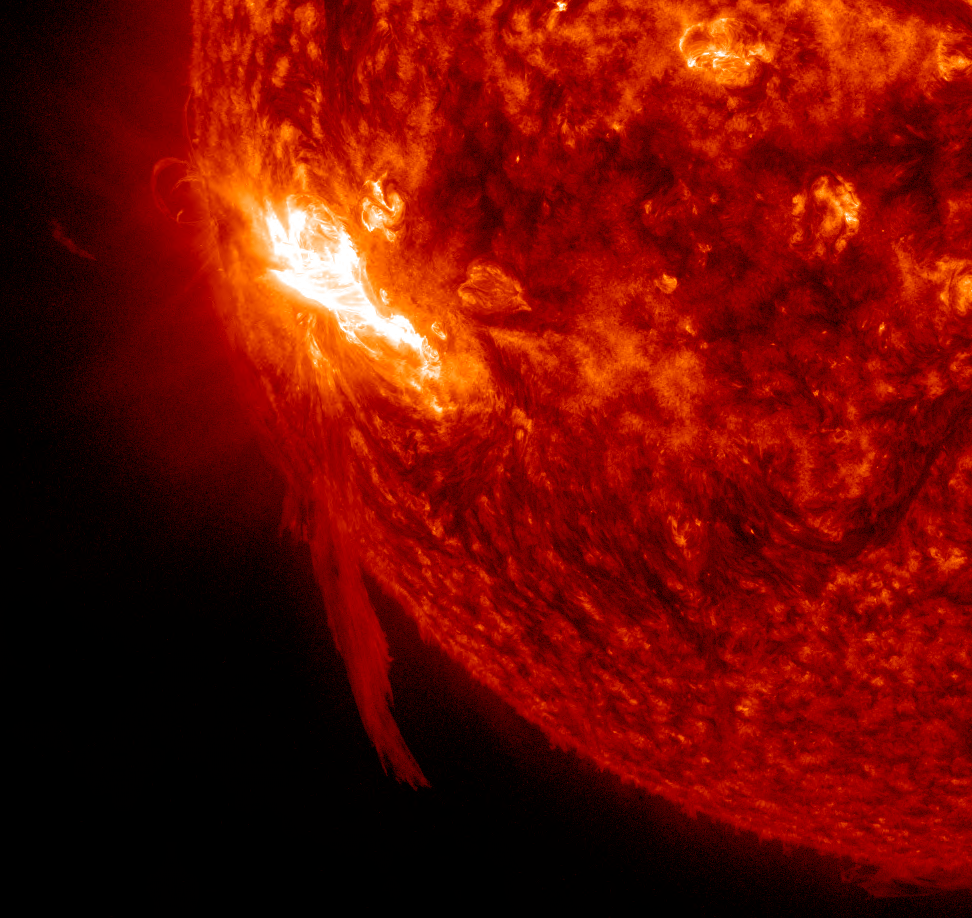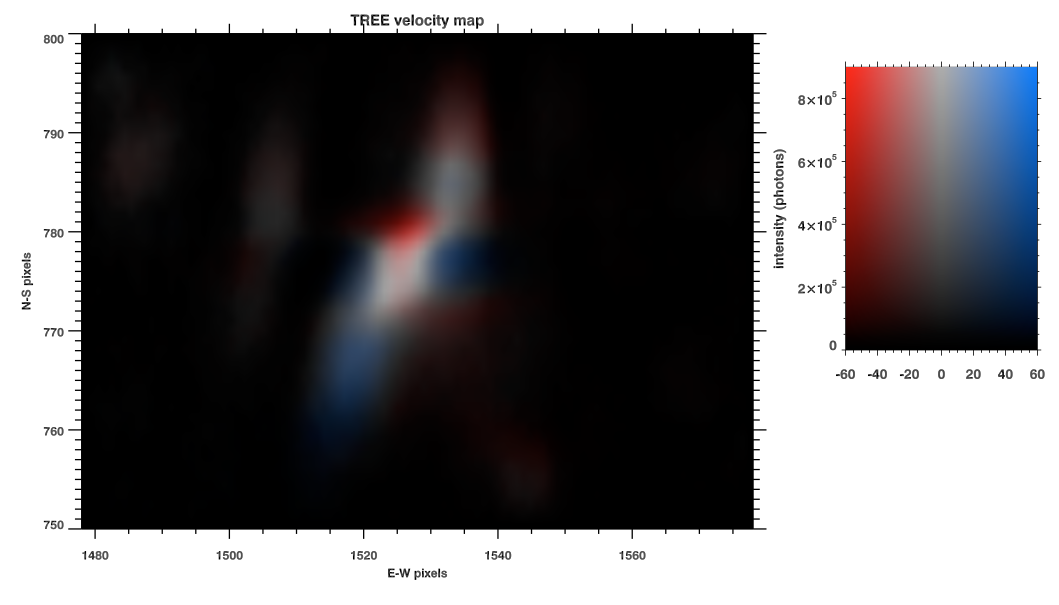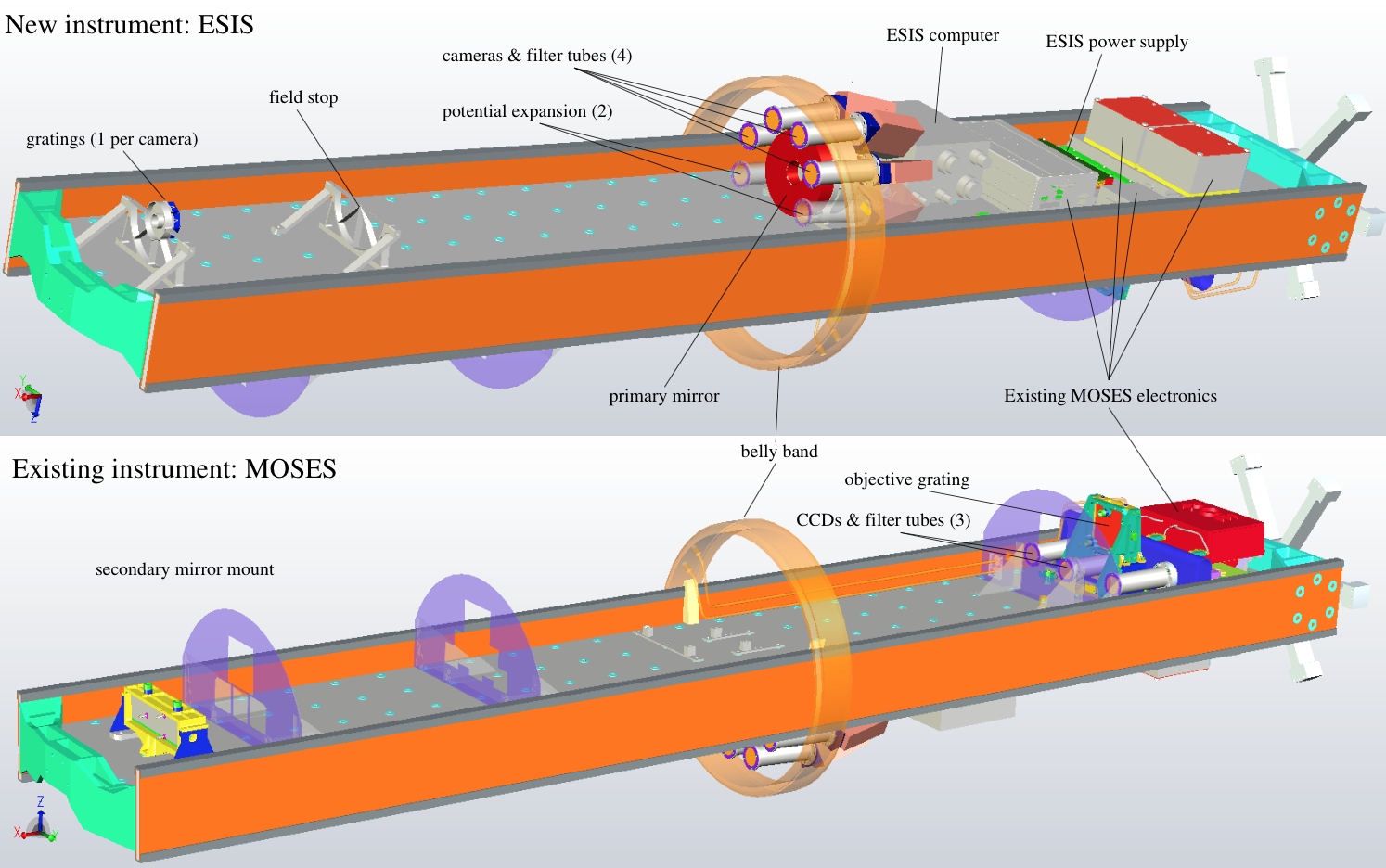MOSES & ESIS
Multi-Order Solar EUV Spectrograph
EUV Snapshot Imaging Spectrograph
Mission Overview

MSU developed a revolutionary spectroscopic technique for solar research in the extreme ultraviolet. This slitless spectrographic technique allows snapshot imaging spectroscopy with data exactly cotemporal and cospectral. This instrument launched 2006 Feb 8 as a NASA sounding rocket payload and successfully returned remarkable data of the solar transition region in the He II 304 ˚A spectral line. The unique design of this spectrometer allows the study of transient phenomena in the solar atmosphere, with spatial, spectral, and temporal resolution heretofore unachievable in concert, over a wide field of view. The fundamental concepts behind the MOSES spectrometer are broadly applicable to many solar spectral lines and phenomena and the instrument thus represents a new instrumentation technology.

Spectroscopic observations have been a powerful tool in unraveling the mysteries of astrophysics generally, and the Sun in particular. However, most instrument designs limit us to observing through a slit: the equivalent of this arrow loop in a medieval castle (image credit: Wikipedia).
The transition region of the solar atmosphere is the interface between the million-degree corona and the chromosphere. It is through this interface that mass and energy must flow to heat the corona and power the solar wind. Additionally, this region of the solar atmosphere is rich with dynamic events that are attributed to magnetic reconnection, the same process that powers solar flares.

The Solar Transition Region imaged during an X-class solar flare on October 19, 2014 (NASA SDO/AIA He II image).

Dopplergram of a transition region explosive event, computed by inversion of He II images from the MOSES rocket instrument. The horizontal scale in the color legend is line of sight velocity in km/s. The data also show significant broadening due to turbulence in the event core (for details, see Fox, Kankelborg and Thomas 2010, http://iopscience.iop.org/0004-637X/719/2/1132/pdf/apj_719_2_1132.pdf).
We are developing the EUV Snapshot Imaging Spectrograph (ESIS), a rocket borne next-generation imaging spectrograph, to observe the dynamical evolution of the solar atmosphere simultaneously in the transition region O V 63.0 nm line, and in the corona with Mg X 62.5 nm. The new instrument will be integrated into an existing payload, alongside the successful Multi-Order Solar EUV Spectrograph (MOSES) instrument. MOSES is currently being refitted to observe the upper transition region and low corona in Ne VII 46.5 nm. When these two instruments fly together, we will observe the solar atmosphere over a large field of view at high cadence in three temperature regimes: 0.25 MK (O V), 0.5MK (Ne VII), and 1MK (Mg X).

The new ESIS instrument will fly in the same payload with our existing MOSES instrument, allowing us to observe simultaneously a range of solar atmospheric layers at different temperatures.
| Launches | |
|---|---|
| Launch Date | Instrument Description (wavelengths, ion species [temperatures] |
| 2006 Feb 8 | MOSES (30.4 nm, He II[0.1 MK] & Si XI[1 MK]) |
| 2015 June | MOSES (46.5 nm, Ne VII[0.5 MK]) |
| 2017 August | MOSES (46.5 nm, Ne VII[0.5 MK]) |
| 2017 August | ESIS (62.9 nm, O V[0.25 MK] & Mg X [1 MK]) |
MOSES sounding rocket payload just after liftoff in Feb 2006.

